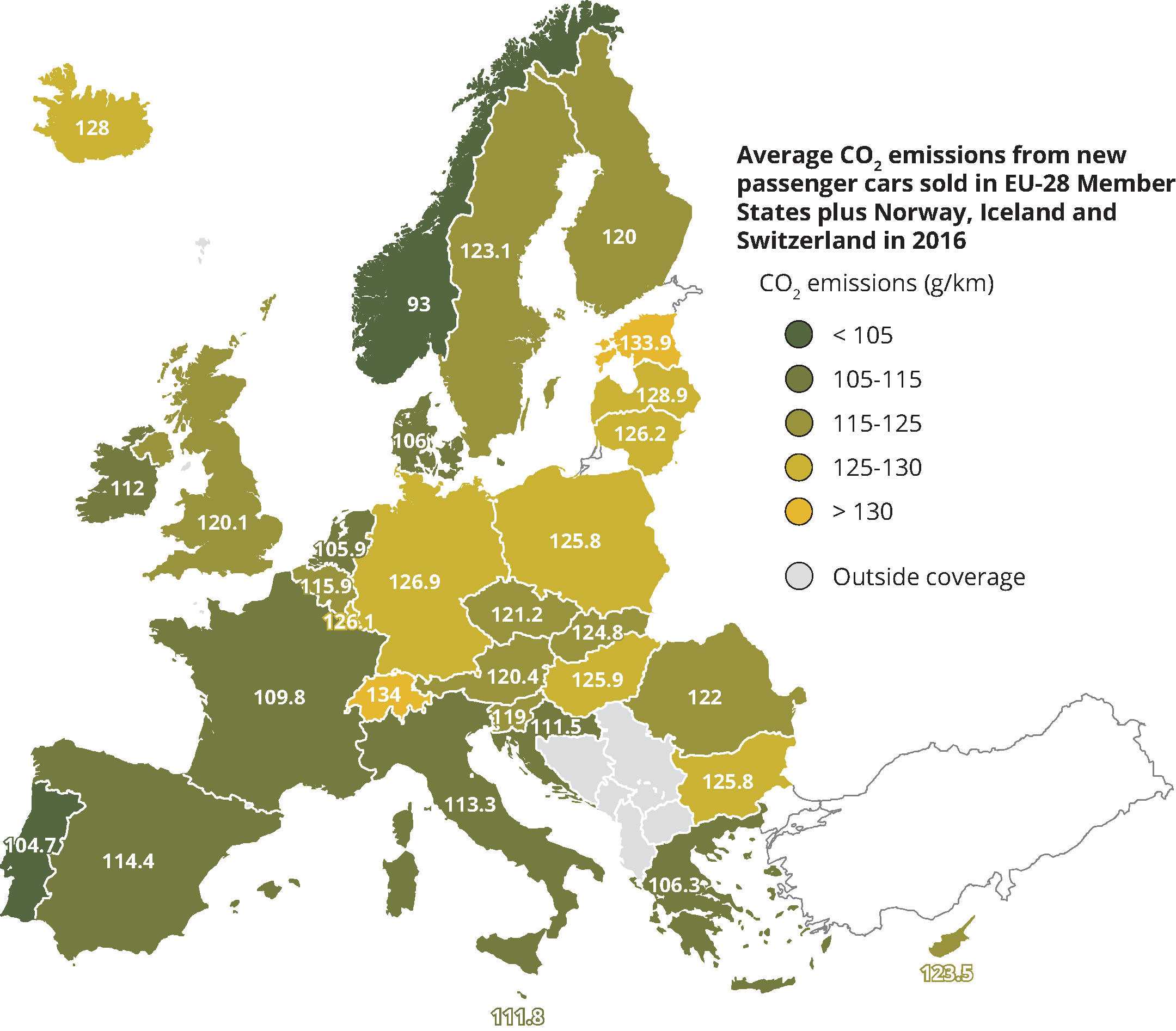Almost all European Union countries have adopted incentives of some sort, which has resulted in a steady fall of average CO2 emissions of new passenger cars. Across all EEA Member States, Norway had the lowest average carbon dioxide (CO2) emissions from new passenger cars sold in 2016. This is due to their wider use of taxes and incentives meant to promote the use of lower-emitting vehicles, according to the EEA briefing 'Appropriate taxes and incentives do affect purchases of new cars'.
The briefing, based on a study done by the EEA's European Topic Centre on Air Pollution and Climate Change Mitigation (ETC/ACM), examines what financial incentives EU Member States, plus Iceland, Liechtenstein, Norway, and Switzerland are using to steer consumers to drive more eco-friendly cars and what the impact of these incentives has been. The analysis includes seven case studies which explore the different approaches used for taxation and incentives across France, Germany, Greece, Ireland, the Netherlands, Norway and Poland. The study found that consumers more readily purchased lower emitting cars where sufficiently large and targeted taxes and incentives were in place.
Reducing greenhouse gas emissions from the transport sector is a key priority for the European Union. Average CO2 emissions of new passenger cars in the EU has fallen steadily over recent years, decreasing by around 30% since 2001. However, a further 20% reduction in average CO2 emissions will be required to comply with the EU's 2021 target of 95 g CO2/km. Later this month, the EEA will publish new official statistics of the average CO2 emissions from new passenger vehicles for 2017.

Source: EEA, 2018
Promoting sales of hybrids and electric cars
The number of countries offering incentives promoting the use of hybrids and battery electric vehicles has jumped considerably from 2010 to 2016. All but one (Poland) have incentives for hybrid and battery electric vehicles. Norway has the highest number of incentives promoting electric vehicles, which reflects the average low emissions level in Norway and the high proportion of battery e-cars in use in 2016. The briefing warns that to foster the uptake of electric vehicles, more charging facilities are needed to reassure people on reliability and range limitation concerns on using battery-powered cars. The study notes that only 11 countries had specific incentives in place to foster more charging facilities for battery-powered cars in 2016.
Emissions from trucks, buses, on the rise
Trucks, buses and coaches are responsible for around one quarter of CO2 emissions from the transport sector and are expected to increase further if new measures to curb emissions are not taken, according to a separate EEA briefing also released today.
Heavy duty vehicles are currently responsible for around 27% of road transport CO2 emissions. They have increased by 25% since 1990, the briefing 'Carbon dioxide emissions from Europe's heavy-duty vehicles' says. Without additional actions to curb emissions, they are expected to rise in the future, by up to 10 % in 2030 compared with 2010. Trucks or transport lorries make up the largest share of heavy duty vehicles on which includes vehicles used for the transport of goods exceeding 3.5 tonnes as well as buses or coaches used for passenger transport that have more than eight seats. There is currently no breakdown of data between trucks, buses and coaches.
To date, there have been no mandatory EU procedures to monitor and report emissions and fuel consumption from heavy duty vehicles unlike those in place for new passenger cars and vans. However, a new monitoring and reporting system will come into force in 2019. This will help promote more efficient heavy-duty vehicles on the EU market. A European Commission proposal to establish mandatory CO2 emission limits for newly registered heavy-duty vehicles is expected later this year.

Document Actions
Share with others